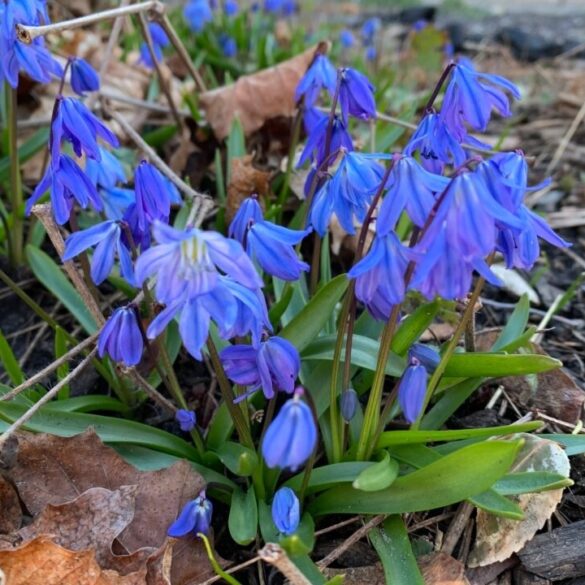
Siberian Squill is an invasive species popping up in Toronto with the spring weather. City officials say it can easily spread into natural areas and forests and is highly toxic if ingested. (City of Toronto/ handout photo)

Beautiful blue blooms are sprouting up across the Toronto region this spring, but while lovely to look at, these flowers are both toxic and invasive.
Known as Siberian Squill, this ornamental plant is “highly toxic if ingested” for both people and pets, despite being a member of the asparagus family, according to Toronto’s Urban Forestry department. A bigger problem, however, is its invasive nature and ability to spread into natural areas and forests.
Siberian Squill is native to Russia and was brought to North America in the late 1700s. It is often planted due to its vibrant early bloom, ground cover, and ability to grow in many conditions. The plant features bright blue, bell-shaped flowers and grows to be about six inches tall.
The same traits that make it attractive are also what make it invasive, however.
This hardy plant is widespread in the Toronto area and could potentially pose a threat to biodiversity in the region’s natural areas as it spreads and chokes out other less robust growers native to the area, says Toronto’s Urban Forestry department.
Aside from being a threat to local ecosystems, Siberian Squill can cause serious illness if ingested by humans or pets. The bulbs, seeds, leaves, and flowers of this plant are toxic and can cause a number of symptoms including diarrhea, vomiting, and abdominal pain.
While the best way to deal with the plant is “to avoid planting it in your garden altogether,” Toronto’s Urban Forestry department recommends existing plants be dug up or mowed before their seed pods develop.
Whether you’re looking for a replacement after digging the flowers out of your garden or you’ve been searching for the perfect blue or purple flower, bluebells, wild geranium, or lobelia all fill the bill and are non-invasive.
Invasive species are “widespread in Toronto and pose one of the main threats to biodiversity in our natural areas,” according to a ProtectNatureTO factsheet.
“Essentially this means that our native birds, insects, and mammals that require natural areas to survive have a difficult time finding shelter and food in our natural landscapes.”
A risk of allowing an invasive species to take over, the sheet explains, is that some of them release chemicals from their roots, changing the soil chemistry in ways “that are detrimental to native plant growth.”
Siberian Squill is not the only species to run rampant in Toronto, ProtectNatureTO says. Dog-strangling vine (pale swallowwort), Japanese knotweed, and phragmites are often encountered in Toronto’s natural areas. All three have been labelled as restricted species by the province.